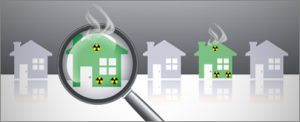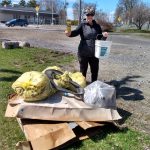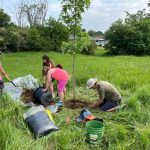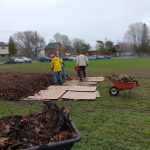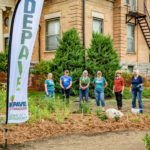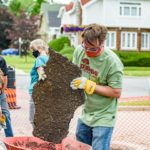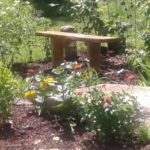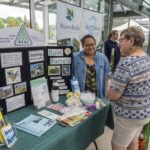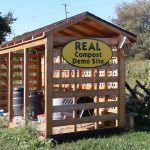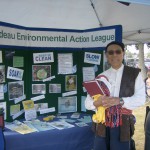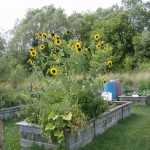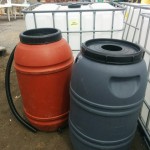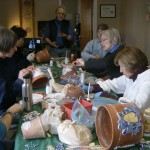Why Consider Testing Your Home for Radon
You can’t smell it, taste it or see it, but radon gas should not be overlooked. Radon gas is considered the second leading cause of lung cancer in Canada after smoking. Because many homes are built on bedrock, there is a chance that radon may be present in those homes. Fortunately, it is possible to measure the radon gas levels in your home with a meter in order to assess the risk. REAL now has several meters for local residents to borrow.
Where is It
Radon gas is a radioactive, colourless and odourless gas emitted when naturally occurring radium breaks down in soil, rock, or water. Accumulation of this gas is likely to occur in the lower levels of the home, especially in unfinished basements. If the area is poorly ventilated, radon gas is more likely to accumulate and pose a greater health risk. But the amount of radon present in homes can vary widely even between neighbouring houses.
Nearly 20% of houses tested in the Leeds, Grenville and Lanark District Health Unit area were shown to have radon levels above 200 Bq/m³ .
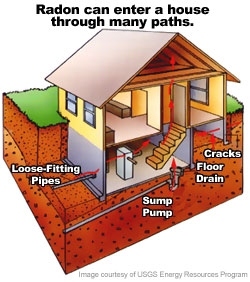 Radon can enter a home through
Radon can enter a home through
- cracks or joints in foundation walls and floor slabs
- dirt floors
- spaces around pipes and posts, floor drains and sump pump holes
- ventilation systems
- window casements
- cavities inside walls
- well water
High radon levels are not just a possible situation in older homes. Tight home construction in newer homes may lead to increased radon concentration as air exchange is reduced.
What to Do if Radon is Detected
Whether you need to take action will depend on the level of radon detected in your home. Health Canada has set guidelines outlining maximum acceptable levels.
- Less than 200 becquerels per cubic meter (Bq/m³) – no action required
- 200-600 becquerels per cubic meter (Bq/m³) – take action to reduce the levels in the next two years
- Greater than 600 Bq/m³ – take action within the year.
Since there can be a large variation in radon levels in a house, long-term testing is recommended. So if you discover elevated radon levels, you will probably want to look into long-term testing where the home is testing for a period of at least 91 days, preferably over the winter months, and sent to a laboratory to be read.
If you determine that radon is a problem you can contact a mitigator who has been certified through the Canadian National Radon Proficiency Program (C-NRPP). Actions could include sealing or improving the ventilation of an area, and are not necessarily expensive, but could reach up to $3,000. REAL can provide the name of a firm in the area you could approach.
Corentium Home Radon Gas Detector
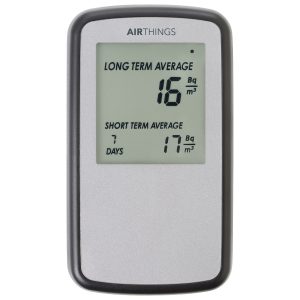 REAL has two AirThings Continuous Corentium Radon Meter for lending. This is a small, palm-sized digital meter that is simple to use. The meter uses 3 AAA batteries (user supplied), and displays readings on an LCD screen. You should sample your home for at least seven days. More meter details from manufacturer. In order to borrow REAL’s meter you must:
REAL has two AirThings Continuous Corentium Radon Meter for lending. This is a small, palm-sized digital meter that is simple to use. The meter uses 3 AAA batteries (user supplied), and displays readings on an LCD screen. You should sample your home for at least seven days. More meter details from manufacturer. In order to borrow REAL’s meter you must:
- Sign a waiver (see the waiver)
- Provide a $300 cheque to REAL which will be held until the meter’s return
- Return the meter within two weeks.
We also have a third meter which is plug-in style.
To arrange to borrow a meter, please contact:
Karen Schecter
(613) 283-4604
[email protected]
The meters are not kept at the REAL Deal Store. Please note that at times there may be a waiting list.
The Leeds, Grenville and Lanark District Health Unit has low cost radon meters available for $20 at their Brockville and Smiths Falls offices that you may wish to consider. They must be left in place for three months and mailed to a lab for results. For more information, contact the Leeds, Grenville and Lanark District Health Unit at [email protected] or 1-800-660-5853. You can also pre-arrange to pick up one of the meters at other Health Unit locations.
Using the Radon Meter
Corentium User Manual
Suggestions Regarding Meter Placement
Corentium Air Things Website
Resources
Health Canada
Take Action on Radon
Cross-Canada Survey of Radon Concentrations in Homes
Health Canada brochure showing radon concentrations across Ontario
Leeds, Grenville and Lanark District Health Unit
Radon: Is it in Your Home – Health Canada
Bob Woods on Radon – April 1, 2019 Presentation in Perth
The Dangers of Radon – Dec. 1, 2020 Lake 88 Interview with Joe Reid from the LGL Health Unit

